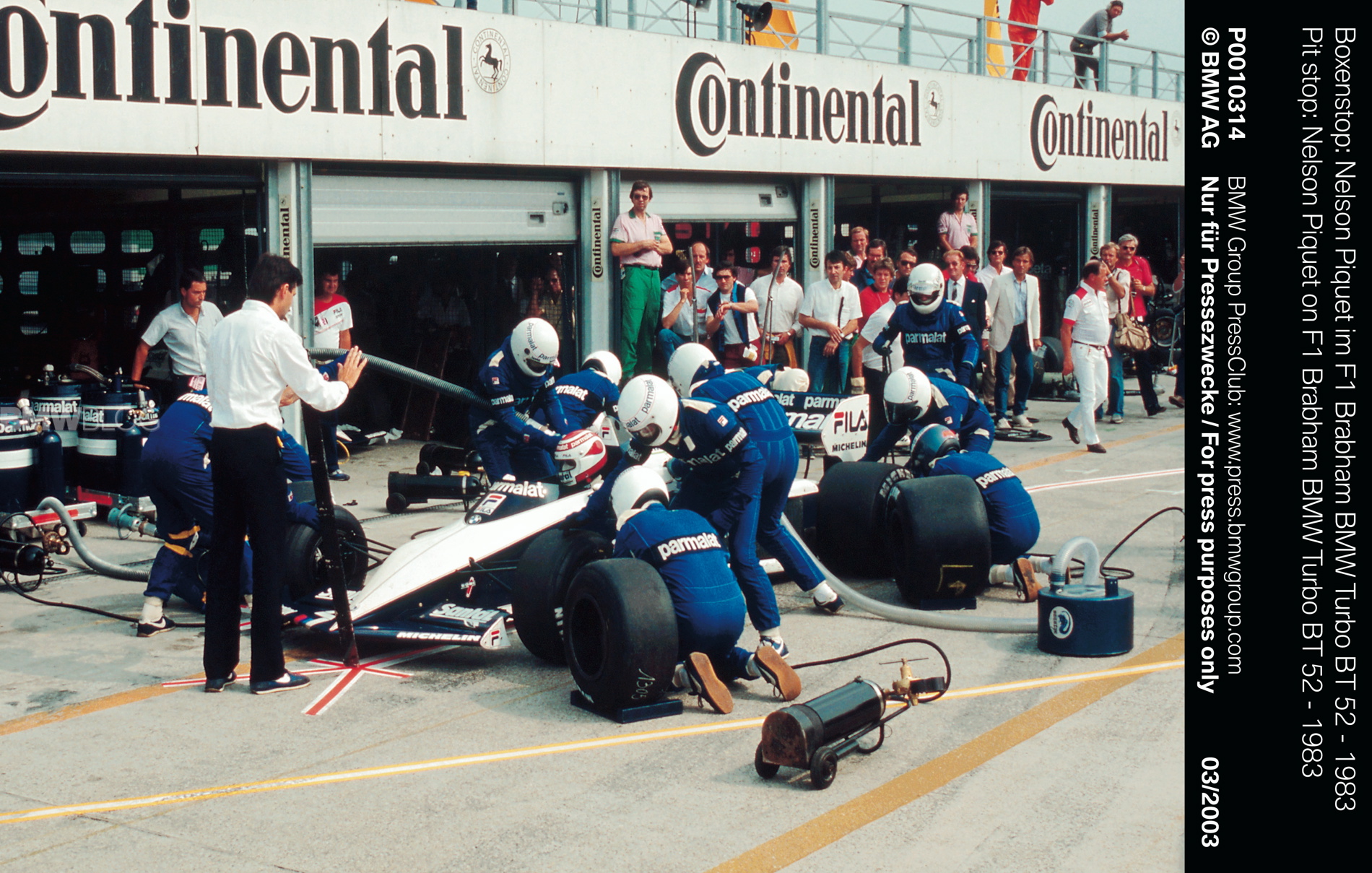BMW was involved in Formula 1 for nearly two decades. Their stint started as an engine supplier to Bernie Ecclestone’s Brabham team in 1982 but it wasn’t before 2006 that the company became an official F1 constructor when it acquired the Sauber F1 Team. However, following the global economic crisis, BMW was forced to pull out of the sport in 2009. So without a doubt, BMW’s best times in Formula 1 were in the 1980s.
In 1982, the Brabham Team, owned by Bernie Ecclestone, started using BMW engines after the two parties signed a deal in 1980. Development of the engine took time but BMW made an admirable start to its F1 career with its first win coming at the 1982 Canadian Grand Prix when Nelson Piquet took home the Checkered flag. The following season, BMW-powered Brabham BT52 helped Piquet win the Drivers’ Championship.
The engine supplied by BMW was a 1.5-liter M12/13 turbocharged straight-4. It was based on 1,499 cc M10 engine block that initially produced just 80 bhp when it was first introduced in 1961 in the Neue Klasse series. At that time, the turbocharged engines had a 1.5-liter limit in F1, so the M10 became a good foundation to work upon. The M12/13 was initially used by BMW in Formula Two but looking at Renault’s success with the fist turbocharged engine in F1 that they introduced in 1977, BMW decided to enter the arena.
By 1985, the M12/13 engine was producing more than 1,350 bhp in qualifying- that’s ludicrous amount of power even by F1 standards. In fact, Paul Rosche, who is labeled by BMW as the “father” of the Championship engine, admitted that BMW did not even know how much power the engine could produce.
“It must have been 1,400 bhp, but we don’t know the exact figure since the engine dynamometer didn’t go beyond 1,280 bhp,” he once stated. To get that kind of twist from such a small engine, BMW had to crank the boost way up to 80 PSI. This was provided by a single turbo that was nearly as big as the engine itself, propelling the car past 11,500 RPM. Nonetheless, the M12/13 engine is widely considered as the most powerful F1 engine to have been ever produced.
Benetton used the BMW powered cars during their first season in F1 (1986) and they won the Mexican Grand Prix that year. Although Benetton switched to Ford in 1987, the raw pace of the BMW engines in their cars was enthralling. At the 1986 Italian GP, Gerhard Berger’s Benetton B186 recorded the fastest straight-line speed by a turbocharged car (351.22 km/h) in the “first turbo era”. Because of its inherently laggy nature, it was incredibly tough to drive the car and manage an efficient time around the track. Yet, the video below of Gerhard Berger launch it around the Adelaide Street Circuit shows why Formula 1 used to be extremely exciting.





































































